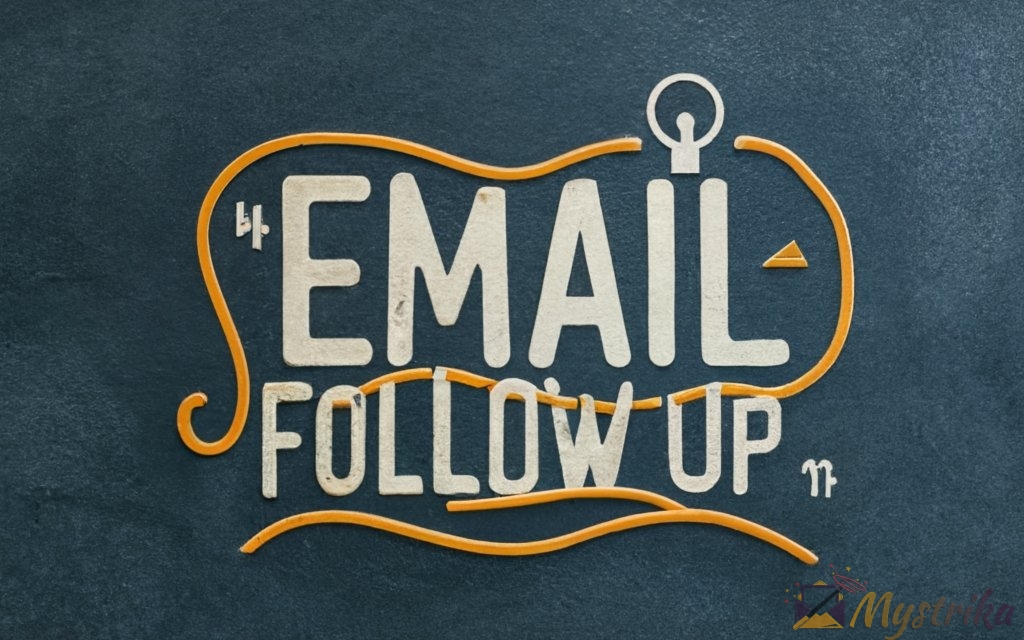Sending that first email is the easy part. Getting a response? That’s the real challenge.
We’ve all experienced the agonizing silence of an unreturned email. But don’t lose hope! With the right follow-up strategy, you can get recipients to engage and take action.
This comprehensive guide reveals professional techniques to master the art of the follow-up. You’ll learn proven best practices for crafting emails that get results. Discover how to pique interest with compelling subject lines, add value in every message, and continually refine your approach.
Equipped with these skills, you can transform non-responses into productive conversations. Read on to become a follow-up virtuoso!
Why Following Up on Emails Matters
Sending that initial email is just the first step. Following up is an essential practice that can make or break your most important communications. Though it may seem tedious at times, consistently circling back and touching base via email pays huge dividends.
Here are some of the key reasons why following up on your emails is so critical:
Get Dramatically Higher Response Rates
Numerous studies reveal that sending at least one follow-up email typically doubles your chances of getting a response. According to metrics analyzed by sales engagement platform Woodpecker, salespeople who send a follow-up have a response rate of around 27%, versus only 16% for those who do not.
That 11 percentage point bump can transform an initial outreach from a waste of time into a fruitful conversation. The same dynamic applies whether you’re reaching out to a prospect, checking in with a existing contact, or following up internally at your company.
Keep Conversations and Relationships Moving Forward
Email is fast, convenient, and asynchronous, which makes it easy for messages to become “set it and forget it.” Without proactive follow-up, even the most promising dialogues risk fizzling out and losing momentum.
Circling back prevents conversations from stalling and gives you an opportunity to pick up where you left off. Following up reassures recipients that you are reliable, engaged, and committed to seeing interactions through.
For example, if you exchanged emails with a prospect but they went silent, following up gives them a cue to respond and move the discussion ahead. Or if you requested feedback from a colleague but never heard back, a gentle nudge reminds them to provide their input.
Remind Recipients of Open Requests or Pending Actions
With overflowing inboxes, hectic schedules, and endless meetings, it’s no wonder that people occasionally drop the ball on responding. A timely follow-up email serves as a friendly reminder about any outstanding requests, questions, or next steps you posed in previous messages.
Maybe you asked a prospect for a discovery call, pitched an idea to your manager, or requested edits on a document from a coworker. Following up holds recipients accountable and top of mind.
For instance, an email saying “circling back on the product demo I mentioned last week” politely prompts them to book that meeting.
Re-Engage Silent Prospects and Contacts
One of the hardest parts about follow-up is determining how long to wait when someone goes radio silent. Send too many messages too soon, and you risk being labeled a pest. Wait too long between outreach, and leads grow cold.
Following up thoughtfully at optimal intervals gives you a mechanism to restart conversations with silent prospects. Creative subject lines pique curiosity, while exclusive offers add value to “win back” disengaged contacts.
With emails, you want to avoid being “out of sight, out of mind.” As long as your outreach provides value, a series of friendly bumps and touches base can turnaround cold prospects.
In summary, embracing email follow-up results in more leads contacted, questions answered, deals closed, and relationships strengthened. The extra effort pays dividends across all facets of professional communication. Approach following up as a chance to demonstrate your persistence, reliability, and commitment to success.

When to Send Follow-Up Emails
Determining the right cadence is one of the trickiest parts of email follow-up. Follow up too soon, and you risk being labeled a pest. Wait too long between outreach, and the conversation goes cold. Here are some guidelines on optimal timing for circling back.
Timelines for Sending Follow-Up Emails
As a general rule of thumb:
- For urgent requests, follow up within 1-3 days. This covers pressing needs like questions critical to project completion, time-sensitive documents requiring feedback, meeting confirmations, or anything crucial to keep work moving.
- For normal outreach, follow up within 3-5 days. This is appropriate for most prospect outreach, meeting requests, pending proposals, and everyday work conversations.
- For non-critical messages, follow up within 1-2 weeks. This covers FYI emails, newsletters, mass announcements, and other broadcast communication.
Of course, these timeframes should be adapted based on the specifics of each situation. For example, enterprise deals often have longer sales cycles, so prospect follow-up may take 2-3 weeks rather than a few days.
For internal team communication, employees at some companies are inundated with hundreds of messages daily. Following up the same day on a non-urgent request could overwhelm colleagues.
Base Follow-Up Timelines on Relationship
The recipient relationships also impacts ideal follow-up timelines. With close colleagues you interact with daily, a same-day nudge may be completely normal. For new prospects who you’ve only traded a few emails with, several days of space is more comfortable.
Cultural norms also come into play. Some business cultures prefer quick turnarounds, while others tend to be more contemplative. Get a sense for the recipient’s preferences and match their cadence.
For cold prospects, market research suggests following up approximately 5-10 days after initial outreach, then again at 10-15 days if no response. But don’t buckle down on a rigid timeline – stay flexible to signs of interest.
Follow Up Immediately if No Read Receipt
With modern email platforms, you can easily track open and click rates. If your message shows zero opens after a few days, something likely went wrong and your email never made it through.
Don’t wait weeks or months wondering if they somehow missed your message. Follow up within a day or two referencing your previous email, and asking if they received it.
For example: “I wanted to double check that you received the email I sent on Monday about the new workflow. Just circling back in case it accidentally filtered to spam or encountered a tech glitch. Please let me know if you have any questions!”
At the end of the day, finding the optimal follow-up cadence requires personalization based on relationship, industry, context, and communication norms. Avoid defaulting to a robotic schedule. Instead, make following up a thoughtful process tailored to each recipient and situation.

Crafting Effective Follow-Up Emails
The key to maximizing email follow-up response rates lies in perfecting the basics. Well-structured messages that crisply deliver your request stand out from the fray. Here are some tips for writing follow-ups that garner replies.
Use a Clear, Honest Subject Line
Keep follow-up email subject lines honest, straightforward, and transparent about your intent. Vague or misleading subjects will frustrate recipients, reducing engagement. Some go-to formats include:
- “Following up on [topic]” – This works for any situation where you need a response on something discussed previously.
- “Circling back on [request]” – If you asked for something specific like a meeting or document, remind them directly.
- “Bumping this up in your inbox” – For stalled conversations, signal that this is not an entirely new message.
Resist the urge to embellish or be cute and cryptic. Recipients value transparency. For example, “Circling back on budget approvals” is far better than “A reminder :)”.
Refresh the Recipient’s Memory
After an compelling subject line, begin by briefly recapping your initial email to provide context. Summarize the date, original talking points, and any requests or questions posed.
This helps recipients instantly recall where things stand, rather than having to hunt down old message chains. State why you are following up and what response you need to move forward.
For instance: “In my last email on June 5th, I outlined a social media strategy for ABC Company and asked if you had any feedback. I’m circling back to see if you had a chance to review the proposed content calendar and let me know your thoughts.”
Keep it Concise and Scannable
Resist the urge to resend your entire original email. Follow-ups should be short, scannable, and focused. Get to the point within 2-3 concise paragraphs. Lean on bulleted lists to break up blocks of text.
Where relevant, include links back to key documents rather than attachments, allowing recipients to easily refer back to prior points. If adding new content, choose judiciously – only directly related resources or answers to questions they had.
Formatting your follow-up content in a skimmable manner shows respect for the recipient’s time.
Add Value with New Information
While your follow-up should stay brief, take the opportunity to add incremental value. What useful nuggets can you offer? Some ideas include:
- Relevant articles, case studies, or reports related to their request
- Answers to questions or concerns they expressed previously
- Deadline reminders or impact escalations if urgency increases
- Examples of how others gained value from what you are proposing
Adding something fresh alongside your reminders turns a routine touch base into a more meaningful exchange.
Close with a Specific Call-to-Action
Every follow-up needs a concrete next step. Open-ended questions like “Thoughts?” won’t cut it. Tell your recipient explicitly what you need them to do:
- Schedule time on the calendar (include a meeting invite link)
- Provide feedback by a certain date
- Introduce you to the right contact
- Answer specific questions
- Choose Option A, B, or C
Clearly articulating the desired action you seek makes responding effortless. Remove any friction standing between your request and their reply.
By honing these tactical elements, your follow-up emails will get recipients up to speed quickly and intuitively. Tightly integrated subject lines, brief recaps, value-added content, and clear calls to action set your messages up for success.
Follow-ups don’t need to be long missives – brevity and clarity turn out higher response rates. Refine your process by tracking open and reply rates, so your future touch base messages continually improve.
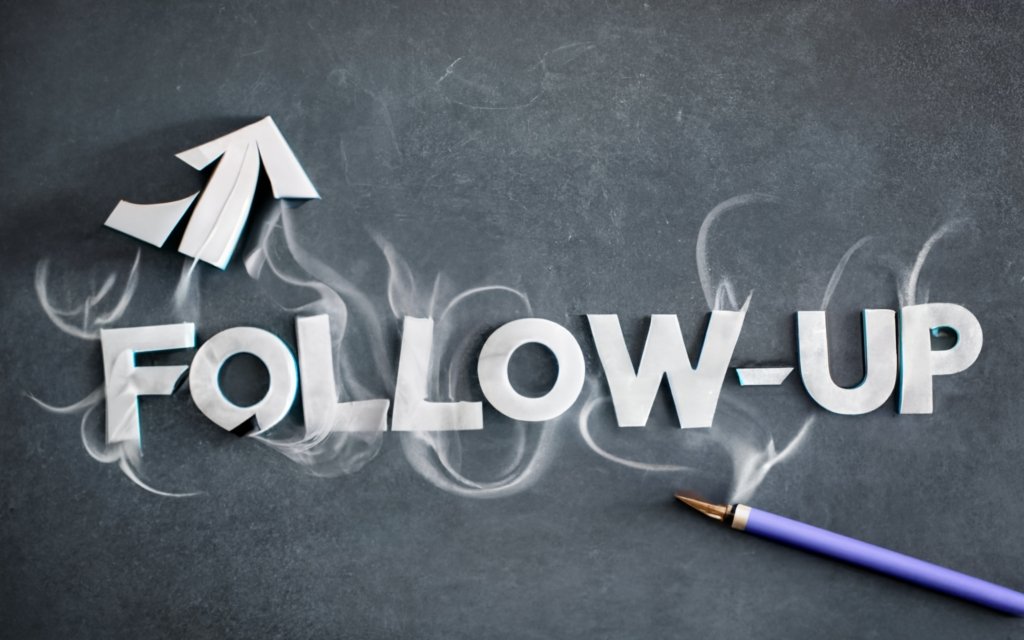
Email Follow-Up Templates and Examples
Seeing examples can help inspire your own follow-up messaging. Let’s walk through some templates and real-world use cases.
Following Up on Meeting Request
If you requested a meeting but never heard back, circle back with a reminder.
Template
Subject: Following up on [meeting type] request
[Recipient],
Hope you’ve been having a great week! Last week on [date], I emailed you about setting up a [short meeting type] to [discuss goals].
I know you’re busy, so does [date/time] or [date/time] work better for your schedule? I’m happy to hop on a quick phone call or video chat whenever is most convenient.
Looking forward to connecting. Please let me know if you need any additional details about the agenda.
[Your name]
Example
Subject: Following up on partnership meeting request
Hi Stacy,
Hope you’ve been having a great week! Last week on the 5th, I emailed you about setting up a quick intro call to discuss a potential partnership between ACME Inc. and your organization.
I know you’re busy ramping up for the quarter close, so does Tuesday at 10am or Wednesday at 2pm work better for your schedule? I’m happy to hop on a quick phone call whenever is most convenient.
Looking forward to connecting. Please let me know if you need any additional details about the agenda for our discussion.
Thanks,
John
Circling Back on Sales Proposal
If you haven’t heard back after sending over a contract, proposal, or agreement, politely nudge.
Template
Subject: Circling back on [agreement type]
[Recipient],
I hope you’re doing well! I wanted to touch base regarding the [proposal type] I sent over on [date]. Please let me know if you have any other questions or concerns about the terms that I can clarify.
In order to move forward with the project, could you please sign and return the [agreement] by [date]? I’m happy to walk through any aspects of it over the phone if needed.
Looking forward to getting this official so we can kick things off. Talk soon!
[Your name]
Example
Subject: Circling back on ACME Inc. partnership proposal
Hi Stacy,
I hope you’re doing well! I wanted to touch base regarding the partnership proposal I sent over on the 10th. Please let me know if you have any other questions or concerns about the terms that I can clarify.
In order to move forward with the partnership, could you please sign and return the agreement by the end of next week? I’m happy to walk through any aspects of it over the phone if needed.
Looking forward to getting this official so we can kick off join content creation and syndication. Talk soon!
Thanks,
John
Bumping Stalled Conversation with Prospect
Re-engage silent leads by recapping previous points and posing easy questions.
Template
Subject: Checking in on [product] inquiry
[Recipient],
I hope you’ve been well! I wanted to check in regarding your inquiry about [product] last month.
I know switching solutions is a big decision. What are the top criteria your team will evaluate as you look at options? Are there any blocking points I can help address?
Let me know how I can provide any additional details to help with your decision-making process. I’m confident [product] can help you achieve [goal], and I’m here to answer any questions.
[Your name]
Example
Subject: Checking in on website redesign inquiry
Mary,
I hope you’ve been well! I wanted to check in regarding your inquiry about our website redesign services last month.
I know undertaking a redesign project is a big decision involving many stakeholders. What are the top criteria your executive team will evaluate as you look at vendor options? Are there any blocking points I can help address?
Let me know how I can provide any additional details to help with your decision-making process. I’m confident our design team can help you achieve your 2020 growth goals, and I’m here to answer any questions.
Looking forward to hearing from you!
John

Email Follow-Up Mistakes to Avoid
While following up certainly improves response rates, it must be done skillfully. Even well-intentioned reminders can backfire if executed poorly. Be aware of these common follow-up email pitfalls.
Sending Too Frequently
One of the fastest ways to become labeled a pest is following up too aggressively. Sales research indicates it takes an average of 12 communications to spark a sale. But all contacts have a different tolerance threshold.
Sending daily or even multiple emails per week will frustrate recipients. After your initial outreach, wait at least 2-3 days before your first follow-up. Subsequent touches should be 3-5 days apart to avoid overwhelming inboxes.
Set calendar reminders for yourself space out communications appropriately. And double check previous messages so you don’t duplicate efforts.
Using a Passive-Aggressive Tone
It’s easy to take non-responses personally, especially when you want to move projects forward. But adopting a passive-aggressive tone will only further delay or derail dialogues.
Avoid guilt-tripping statements like “Hoping this didn’t get lost in your inbox again!” or “Let me know if you would prefer I stop contacting you.” This alienates recipients and damages relationships.
Even if you are feeling frustrated, keep follow-up tone upbeat, casual and helpful. Send the message that you are eager to connect and provide value.
Forgetting Personalization
One of the worst follow-up email offenses is failing to personalize messages. Sending the exact same text to dozens of recipients screams copy-paste.
Personalize by:
- Referencing previous conversations or meetings you’ve had
- Commenting on recent social media posts or news featuring them
- Incorporating specific details about their company or industry
- Asking about topics you know interest them
- Including links to resources tailored to their needs
Putting in just a bit of individual effort earns huge returns in likability.
Neglecting to Add Value
Follow-ups that simply say “Checking in!” or rehash old points come across as empty. Without offering readers something useful, why should they respond?
Look for opportunities to:
- Provide answers to questions they previously asked
- Share links to an insightful article, ebook, or case study
- Suggest an exclusive offer that adds incentive to engage
- Remind them of upcoming deadlines or events
Adding even one compelling piece of info transforms a routine touch base into a value-driven exchange.
Skipping the Call-to-Action
Every outreach needs a concrete call-to-action, even quick check-ins. Open-ended questions like “Thoughts?” are too easy to ignore. Clearly tell your recipient what you need them to do next.
Possible CTAs include:
- Requesting specific feedback by a certain date
- Asking targeted questions to advance the dialogue
- Providing multiple meeting time options
- Suggesting a quick phone or video call
- Giving clear response options like “Yes/No”
Without a defined next step, your perfectly crafted reminder risks receiving no reply at all. Give themdirection.
Not Proofreading Carefully
Typos, grammar errors, and inaccurate details in follow-ups portray carelessness. Always proofread thoroughly before hitting send.
Common proofing oversights include:
- Recipient name spelled incorrectly
- Wrong company referenced
- Broken image and link formatting
- Incorrect previous meeting dates
- Requests not matching earlier conversations
Rushing follow-ups out with mistakes suggests the interaction is not vital to you. Double check accuracy to show your professionalism.
Avoiding these missteps sets your follow-up emails on the path for success. Monitor recipient behavior and fine-tune your outreach until you discover the optimal frequency, tone, details, value adds, and calls to action personalized to each person and situation. With refinement, you will get dramatically higher response rates.
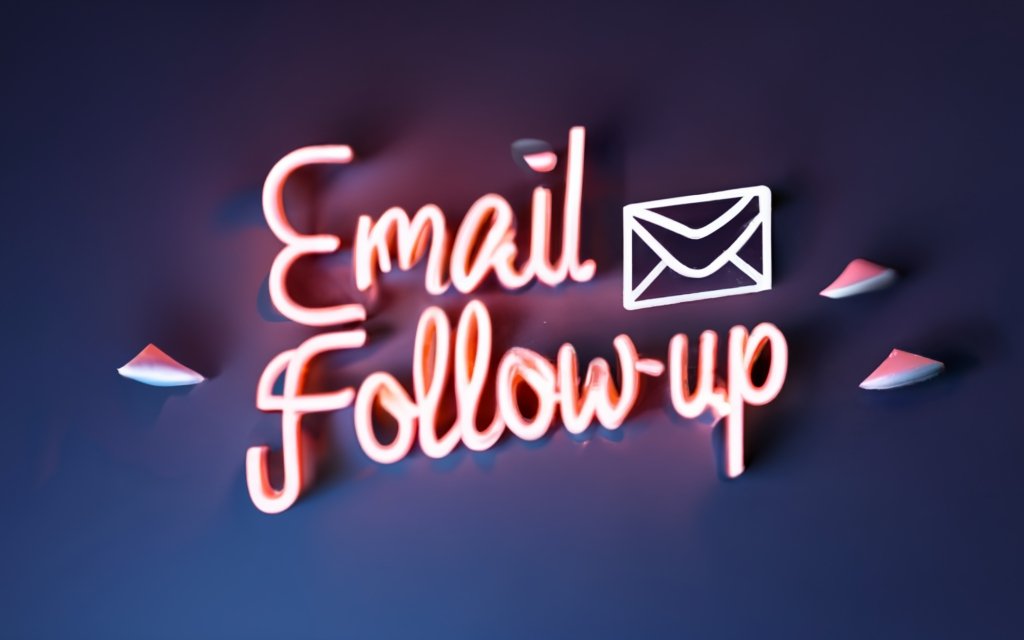
Best Practices for Captivating Subject Lines
Your subject line is the first impression recipients have of your message. Follow these tips to craft subject lines that captivate audiences and drive opens.
Keep Subject Lines Clear and Honest
Avoid vague, mysterious, or misleading subject lines. Be transparent about your intent from the start.
Do Capitalize the First Letter and Proper Nouns
- Capitalize the first letter of the subject line to improve scannability
- Also capitalize any proper nouns like company names or individual names
Don’t Capitalize Every Word
- Avoid ALL CAPS subject lines, as these feel visually jarring
- Similarly, skip randomly capitalizing words within the subject
In general, capitalize normally as you would in a sentence. Anything unusual risks getting flagged as spam.
Use Emotional Triggers Strategically
Spark interest by incorporating subject line triggers, but avoid overusing them. Rotate between different triggers to prevent fatigue.
Urgency
- “One week left for early registration prices”
- “Last chance for 50% off deal”
Exclusivity
- “Reserved for our top clients”
- “Executive-level info enclosed”
Curiosity
- “Guess who just became a customer?”
- “The one metric you must track”
Write Subject Lines That Command Action
Prompt recipients to open your email using compelling verbs and formatting.
Imperative Verbs
- “Book your session today”
- “Register for our upcoming webinar”
Parentheses for Visual Impact
- “Important: Action needed on (Project Name)”
- “Sale ends tomorrow (50% discount inside)”
Email subject line best practices balance clarity, intrigue, value, and actionability. Test different options and keep refining based on open rates.

Tools and Software for Follow-Up Automation
While nothing beats personalized reminders, various tools can help streamline and scale your email follow-ups. Consider leveraging these capabilities:
CRM Integrations
Linking your customer relationship management (CRM) system with your email enables powerful automations for follow-ups. Popular CRMs like Salesforce, HubSpot, and Zoho all integrate with email clients.
CRM-triggered follow-ups allow you to:
- Automatically follow up with new leads added to your pipeline
- Send reminders to contacts when deals stall
- Notify sales reps when accounts go cold after periods of inactivity
- Track open and reply rates to gauge follow-up effectiveness
Set rules like waiting 5 days after a discovery call to follow up, or 3 days after sending a contract. CRM-email alignment keeps your team organized and responsive.
Email Tracking and Reminders
Email tracking through pixels or open APIs gives visibility into who is engaging with your messages. Monitoring opens and clicks helps optimize follow-up timing and relevance.
Email platforms like Gmail, Outlook, and Yahoo also allow setting reminders to circle back if recipients haven’t replied after certain time periods. Reminder notifications prompt you to follow up.
However, basic email reminders have limitations:
- They don’t confirm if a prospect actually saw your message
- You must manually compose and send each reminder
- There is limited reporting on follow-up effectiveness
For more robust functionality, sales engagement software layered on top of email works best.
Calendar Invite and Booking Links
Including one-click calendar invites or booking links within your email makes scheduling meetings seamless.
Rather than volleying back and forth finding a mutual time, your prospect can peek at your availability and instantly select a slot.
Tools like Calendly, Acuity Scheduling, ScheduleOnce, and Doodle integrate directly with calendar systems. Set up unique booking links for each follow-up outreach.
Streamline follow-ups with tools that provide transparency, reminders, and easy responding. But avoid fully automating emotional touches like relationship-building. The human factor remains key.

Keys to Re-Engaging Silent Prospects and Contacts
When leads or contacts suddenly go radio silent, all hope is not lost. With a methodical approach, you can restart stalled conversations and rekindle interest.
Study Previous Conversations and Interactions
First, meticulously review your past communications and meetings with the prospect to spot any clues.
- Were certain topics a source of excitement or objection?
- Did they mention specific challenges facing their company?
- What questions did they ask about your product or service?
- Are there upcoming events or milestones relevant to their business?
Look for insights you can leverage to craft targeted outreach. Demonstrate you understand their situation and have been paying close attention.
Provide Tailored Value in Each Message
Next, develop a cadence that provides incremental value with each touch point. Avoid blasting the same generic sales pitch repeatedly. Tailor each message.
- Send relevant articles, case studies or analysis based on their specific interests
- Highlight product features or services that address issues they face
- Offer trial extensions or exclusive discounts if budget is a concern
- Propose joining a peer community or attending an upcoming event
When you demonstrate genuine interest in helping, prospects reconsider your solution when the timing is right.
Use a Friendly, Persistent Cadence
Don’t take a prospect’s silence personally or as a final rejection. Business needs evolve rapidly. Follow up persistently but politely, varying your approach over time.
- Wait 2 weeks between initial outreach attempts to avoid pestering
- Slowly increase cadence if you still don’t reconnect after 2-3 tries
- Change subject lines, offers, and calls to action to spark renewed interest
- Consider more personal forms of outreach like direct mail or phone calls
With consistent nurturing, you can bring back leads that have gone cold. Just resist aggressive bombarding. Friendly tenacity wins over time.
With a tailored, value-focused cadence, consistent follow-up brings incredible rewards. Keep an open mindset, and remember that timing and circumstances continuously change.

Continually Refine Your Follow-Up Process
Like any business process, optimizing your email follow-ups takes ongoing refinement through data and testing. Avoid stagnating – continually evolve your outreach.
Review Metrics on Open, Click-Through, and Reply Rates
Leverage email analytics to understand how your follow-ups are performing. Key metrics to monitor include:
- Open rates – This indicates if your subject lines and send times are effective at getting opened.
- Click-through rates – Are recipients engaging with links and taking actions within your emails?
- Reply rates – The ultimate goal is spurring a response, so track reply percentages.
Analyze these metrics across recipient segments, message types, subject lines, and other variables to discover insights.
Experiment with Timing, Offers, and Content
Don’t settle on a rigid cadence, content style, or approach. Run A/B testing experiments to optimize your follow-ups.
Some variables worth exploring:
- Timing – Test waiting 1 vs. 3 vs. 5 days between reminders
- Subjects – Compare urgency triggers vs. exclusivity vs. curiosity
- Content – Evaluate brief recaps vs. detailed summaries
- Offers – See if discounts, trials, or gifts impact reply rates
- Personalization – Observe the lift personalized details provide
- Calls-to-Action – Determine which requests elicit the highest response
Play around with follow-up components and continue refining based on the results.
Track Results by Message Type and Recipient
Look at follow-up effectiveness across different:
- Relationship types – Are cold prospects or existing customers more responsive?
- Message types – Do follow-ups to proposals perform better than meeting reminders?
- Recipient personas – What follow-up approach resonates best with executives vs. IT managers?
- Industries – Does the cadence need to quicken or slow across different sectors?
Customize your process for each situation rather than taking a one-size-fits-all path. Follow-ups are not a “set it and forget it” activity.
Continuously tweak timing, content, segmentation, and channel use. Email analytics and CRM reporting provide the data you need – the key lies in asking the right questions to guide optimization. Commit to perpetual follow-up improvement.
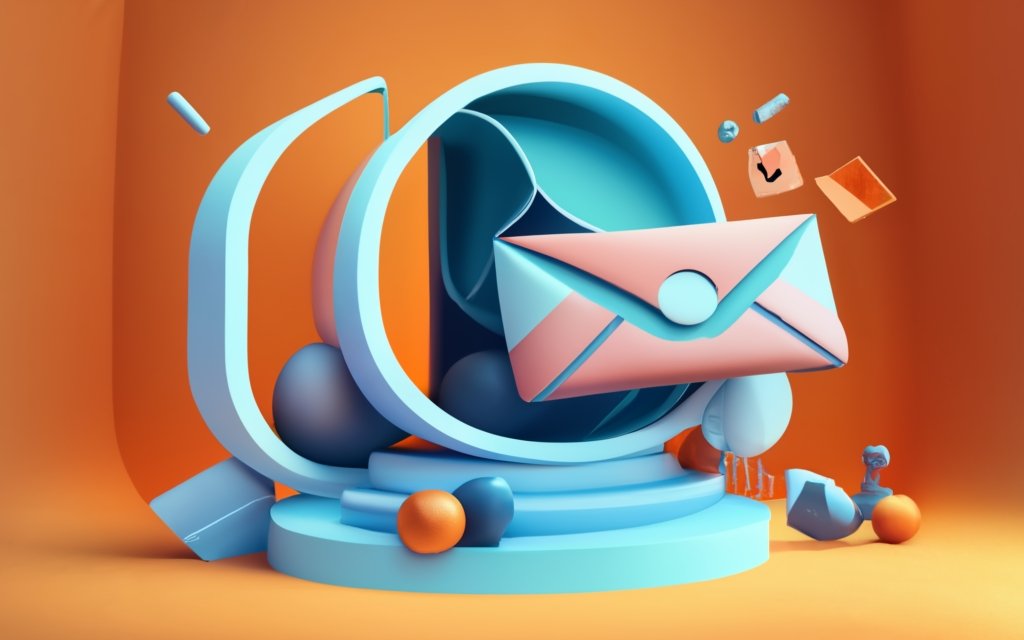
Make Following Up a Habit, Not a Chore
Rather than viewing follow-ups as a nuisance, work them seamlessly into your regular routines. Use these tips to develop good follow-up habits.
Create Templates and Automate Where Possible
Save time spent composing routine reminders from scratch each time. Create a library of templates covering common scenarios you encounter:
- Following up on sent proposals or contracts
- Circling back after initial prospect outreach
- Checking in on outstanding meeting requests
- Reminding colleagues about impending deadlines
Build a robust template library over time that you can continually tailor and refine. Automate sending through rules and triggers in your CRM to streamline the process.
Set Calendar Reminders to Spur You Into Action
Don’t rely on memory alone to know when to follow up. Physical calendar reminders prevent messages from slipping through the cracks.
Schedule blocks 2-3 days after your initial outreach as placeholders for follow-up. Enter the recipient name, your original request, and prior discussion points so you come prepared.
Likewise, set recurring reminders weekly or monthly to check in with warm leads in your pipeline that have gone quiet. Falling off radars is all too common.
Follow Up Respectfully but Persistently
Cultivate the right mindset and habits around follow-up, balancing professional persistence with patience.
- Assume positive intent – don’t take non-responses personally
- Start with polite, soft touches then increase urgency
- Know when discussions have truly ended versus just stalled
- Show tenacity but avoid aggressive badgering
Make it a habit to re-engage at optimal intervals rather than leaving conversations hanging.
Following up effectively becomes second nature once you develop the right templates, reminders, tools and outlook. Don’t postpone critical communication – with good habits, you can stay on top of touch points in a scalable way.
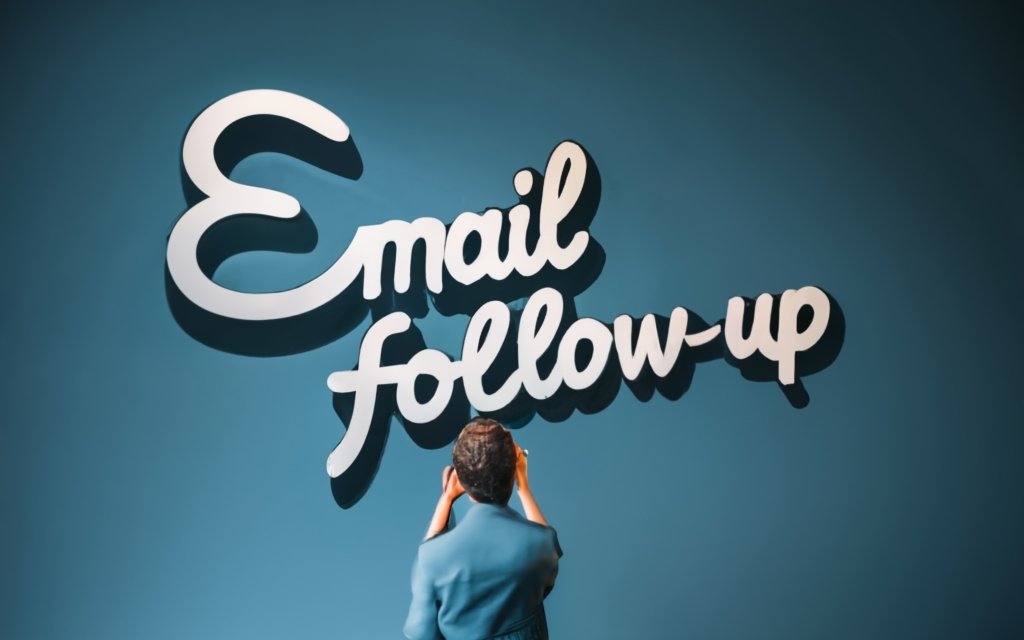
Key Takeaways on Email Follow-Up Best Practices
Let’s recap the core principles to remember when crafting your follow-up emails:
- Follow up consistently – Statistics show substantial lifts in response rates when you send at least one reminder. Make it a consistent habit across all key communications.
- Time follow-ups strategically – Allow 2-3 days after initial outreach as a general best practice, adjusting based on urgency and relationship. Follow up again if no receipt confirmation.
- Refresh context in your reminder – Recap date/key points from original discussion to jog the recipient’s memory and provide context.
- Keep messages concise – Get to the point within 2-3 focused paragraphs. Avoid large blocks of copied text.
- Add value with each touch – Include exclusive offers, useful resources, or answers to questions with each follow-up to demonstrate ongoing helpfulness.
- Close with a specific CTA – Give clear direction on any response or action you need from the recipient to eliminate ambiguity.
- Avoid common mistakes – Steer clear of pestering, passive-aggressive language, lack of personalization, and other pitfalls.
- Write compelling subject lines – Balance clarity, emotional triggers, and commands to action to spark opens.
- Leverage tools for efficiency – Use tracking, reminders, templates, and automation to streamline the process where possible.
- Continually refine and optimize – Review metrics, run A/B tests, analyze by segment, and keep evolving your approach.
- Make it a habit – Build follow-up into your regular routines through calendar reminders and templates to stay consistent.
With this checklist of best practices in mind, you’re ready to follow up like a pro. Your improved response rates will prove that the extra effort pays off. Don’t leave conversations hanging – demonstrate your commitment to success through consistent, value-driven follow-up.
Frequently Asked Questions About Email Follow-Up
Q: How soon should I send a follow-up email if I don’t get a response?
A: For most situations, follow up 2-3 days after your initial email. For more urgent requests, you can sometimes follow up the same day. But avoid multiple emails per day, which is too aggressive.
Q: How many follow-up emails should I send if I don’t get a response?
A: Try sending 2-3 follow-up emails spaced a few days apart. If you still don’t hear back after 3 attempts, wait a few weeks before reaching back out to avoid badgering them.
Q: Should I change my follow-up email content each time?
A: Yes, you should customize each follow-up, not just copy/paste the same email. Tailor the message, offer new information/resources, change subject lines, and vary your call to action.
Q: Is it okay to follow up with contacts who I haven’t emailed in a long time?
A: Absolutely. Following up periodically with old contacts is recommended to re-engage them. Just focus the message on providing value, not making demands.
Q: How do I write follow-up emails to sales prospects who have gone silent?
A: Study their past interactions to personalize content focused on their needs. Take a consultative posture offering insights, not a sales pitch. Slowly increase outreach cadence and vary your offers.
Q: What are some good tools for automating follow-up emails?
A: Many CRM platforms have email integration and reminders. Also install sales engagement software, templates, or calendar booking links into your email for efficiency.
Q: How do I measure the effectiveness of my follow-up process?
A: Track metrics like open, click-through, and reply rates. Break down by recipient type, message format, timing, etc. to see what works. Refine based on insights.
Q: Is it rude to call someone out for not replying?
A: Yes, avoid any wording that suggests they are at fault or you are frustrated. Keep messages positive in tone, focused on value you can provide.

